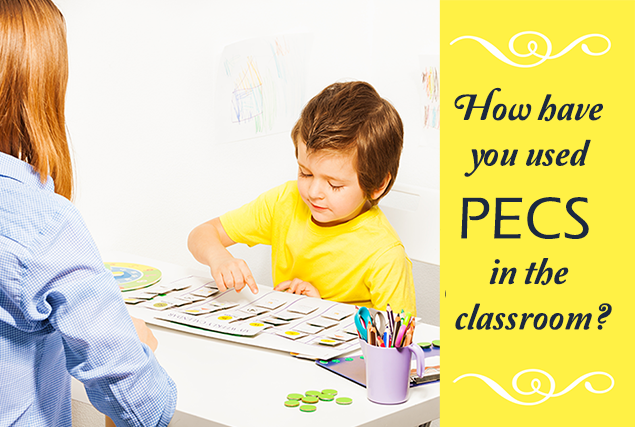The Picture Exchange Communication System for Specialized Instruction
Posted by Network Support · Leave a Comment
Teach your differently-abled students to effectively engage in a conversation using this communication method.
The Picture Exchange Communication System (PECS) is a form of alternative and augmentative communication, originally developed for children with Autism. The PECS method teaches communication using only pictures or pictures in combination with speech. This method primarily teaches students to make requests and express their needs and wants. Students are taught to initiate communication by exchanging a picture for a desired item. It is then followed by learning to comment about or give a description of an image. The final outcome of the method is that the student should be able to engage in a conversation.
It should be noted that this method should only be considered for facilitating communication and not be used as a form of communication. This method is comprised of six phases, which together make up the process of language acquisition. The six phases are:
Phase 1: Teaching the Physically Assisted Exchange
Before commencing Phase 1, a ‘reinforcement sampling’ is conducted. A list of activities or rewards most preferable to the student are identified and used in the following learning phases to motivate the student.
In Phase 1, the student is taught the three fundamental actions essential for communication using the PECS method; ‘look, reach and pick.’ The student is taught to look at, reach for, pick up and hand over the image to the teacher. In order for the learning to be effective, external factors such as the learning environment, reinforcements and regular monitoring of student progress ought to be considered throughout the process.
Phase 2: Expanding Spontaneity
Spontaneity of the student’s responses is addressed during Phase 2. In this phase, the teacher creates opportunities for the student to practice and improve their communication. The student has to initiate communication, capture the teacher’s attention and ensure that the object is given to them. Similar to Phase 1, the focus is on the three skills, however, the student should initiate with little or no assistance from the helper. Verbal prompting is again avoided in this phase.
Phase 3: Simultaneous Discrimination of Pictures
Phase 3 is initiated when the student is ready to choose from more than one picture during an exchange. The goal in this phase is for the student to be able to discriminate between two pictures – one is correct and one is incorrect.
Phase 4: Building Sentence Structure
In Phase 4 the student is taught to use a sentence strip. They add an “I want” symbol along with the desired picture, onto a strip. This is done to help stimulate verbal development and to establish a framework for future communication exchanges. The components addressed in Phase 4 are introducing sentence structures, promoting verbalization, and monitoring student progress.
Phase 5: Responding
This stage aims at teaching the student to answer the question “What do you want?” The response to “What do you want?” is taught by the student learning to choose which image represents their needs.
Phase 6: Commenting
The goal of phase 6 is to teach the student to label items. As a first step, the student is encouraged to listen and respond to the teacher’s questions. With practice, the questions are eliminated and the student is encouraged to make spontaneous comments.
Finally, at the end of the six phases, the student should be proficient in using his/her communication book for making communicative exchanges. These strategies can slowly be graded by the amount of increased pictures for discrimination and the increase of more spontaneous comments. These strategies can also be expanded to incorporate communication with peers and the community.
Like this article for teachers?
Browse the Professional Learning Board COURSE CATALOG to find related online courses for teachers in your state. Professional Learning Board is a leading provider of online professional development classes that teachers use to renew a teaching license or renew a teaching certificate.





